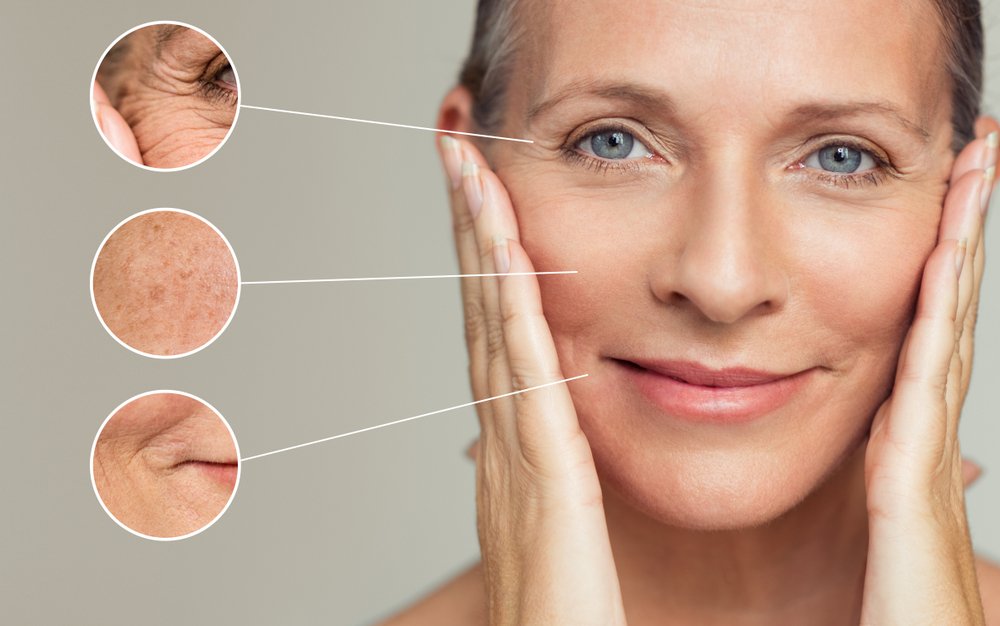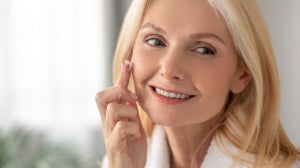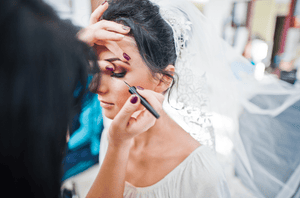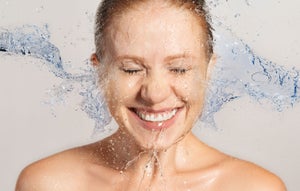
The health of our skin is affected by a number of factors, from environmental conditions, such as the weather and pollution, to lifestyle factors that include our jobs, diet and stress.
No7 Beauty has analyzed data to find out which states are best and which are worst for skin, based on air quality, humidity levels and sunlight exposure.
The best states for skin health
By analyzing existing data on air quality, humidity and hours of sunlight exposure, the team at No7 Beauty scored each state out of 135 to determine which were best for skin health. The lower the score, the better for skin.

No7 Beauty’s analysis revealed that Montana has the best environmental conditions for healthy skin, with 22 points out of 135, the lowest score of all. The state ranks best for total hours of sunlight exposure, along with ideal humidity levels and good air quality. Montana’s average yearly temperature comes in on the colder side of 42.7°F.
North Dakota comes in second, scoring 26 out of 135, with Minnesota (30 out of 135), Iowa (30 out of 135) and Nebraska (40 out of 135) rounding off the top five states for healthy skin.
The worst states for skin health
At the other end of the scale, West Virginia has the worst environmental conditions for skin health, scoring a 134 out of 135 in No7’s skincare index. The state scores poorly on the hours of sunlight exposure and air quality, despite a mild average yearly temperature of 51.8°F.
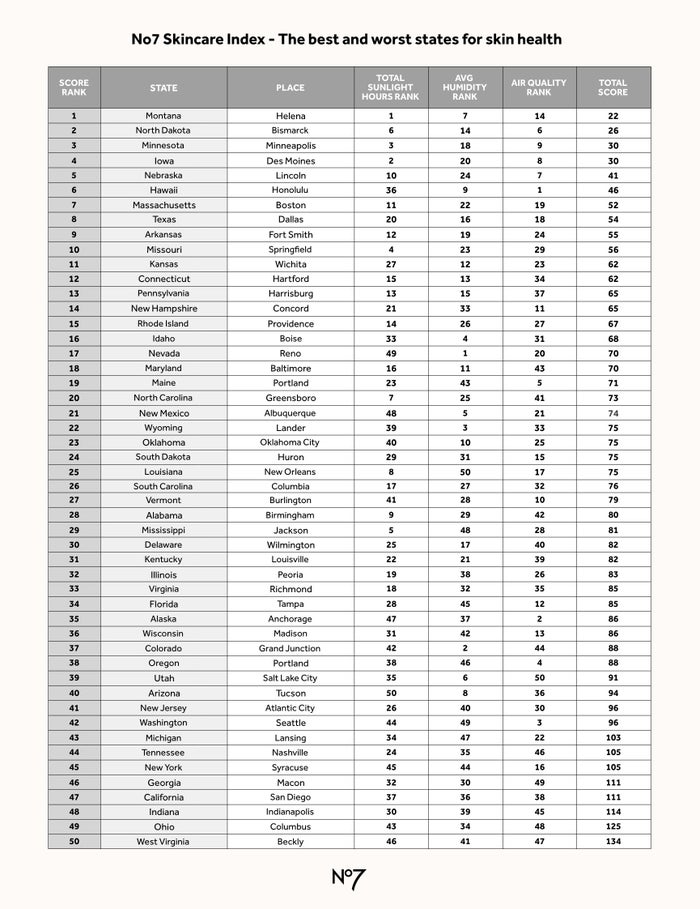
The impact of sunlight exposure on skin
Unprotected exposure to the sun causes both visible damage on the skin’s surface (sunburn, redness and inflammation) and invisible damage to skin cells, elastic fibers and collagen levels, accelerating the development of signs of aging.
The average number of sunlight hours in the US across all states is 2,700 hours in the year. With this information, the No7 team ranked the states in order of those closest to that number.
Montana takes top spot, while Arizona takes the bottom spot in this ranking, as sunlight exposure is high in this state – the more sun, the greater the risk of sun damage.
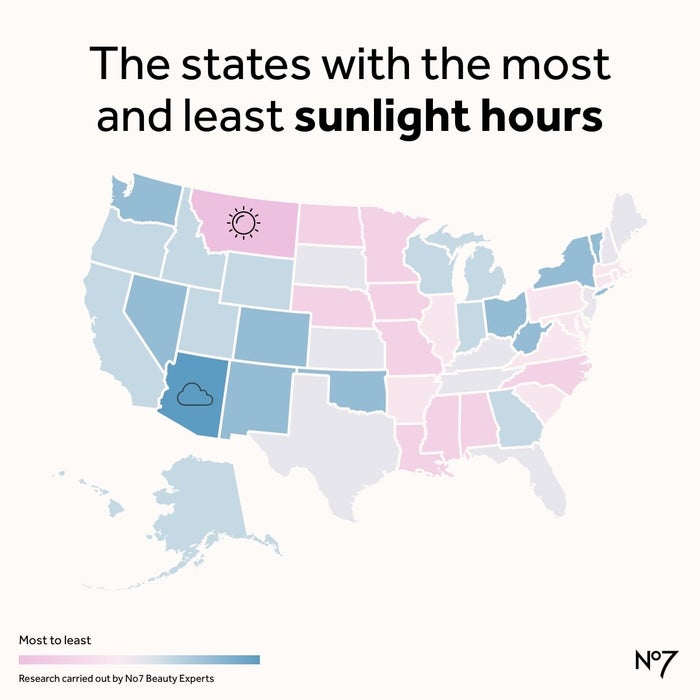
Humidity and skin
An important factor to consider when it comes to healthy skin, humidity refers to moisture (or the lack of it) in the air. Excess humidity causes pores to open, making them susceptible to dirt, oil and allergens, which can trigger acne, skin breakouts, eczema, and allergic reactions. Too little moisture, on the other hand, causes skin to dry out and become flaky.
Humidity was calculated by taking averages of the humidity percentages in each state from the morning and evening, and ranking the states in order of those closest to the average of 65%.
No7’s ranking revealed that Nevada scores best when it came to the ideal humidity conditions – the air had the ideal ‘dew point’. The driest, least humid state is Louisiana, with an average yearly temperature of 64.4°F. Louisiana is also one of the top three states for hot weather. These high temperatures increase water loss from the body, leaving skin feel irritated, red and dry.
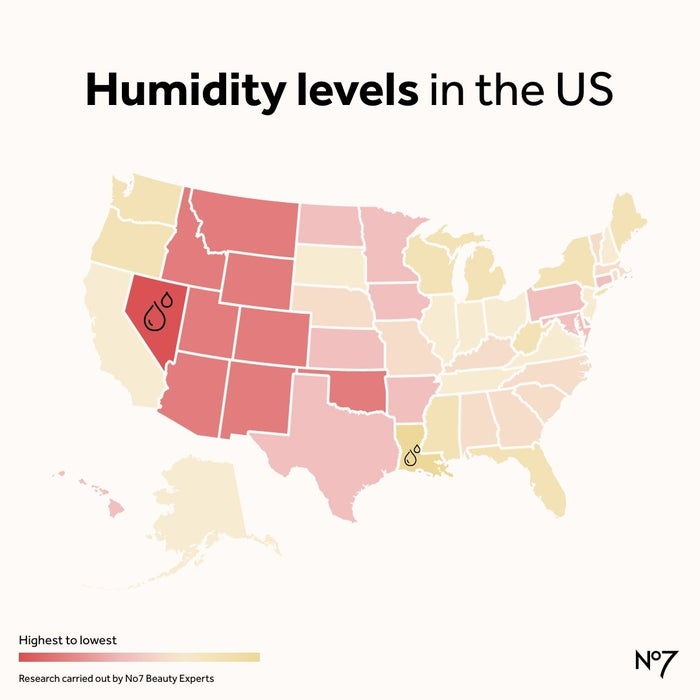
Air quality and its impact on skin
Poor air quality and high levels of pollution have been linked to skin aging and acne, as well as inflammatory and allergic skin conditions, such as dermatitis, eczema and psoriasis.
No7’s research found that Hawaii’s has the best air quality levels, scoring 1 out of 135. Unfortunately, this tropical state didn’t quite make it into the overall top five due to its high number of yearly sunlight hours. Utah is at the bottom of the list for air quality levels, scoring 50 out of 135 on this one factor alone.
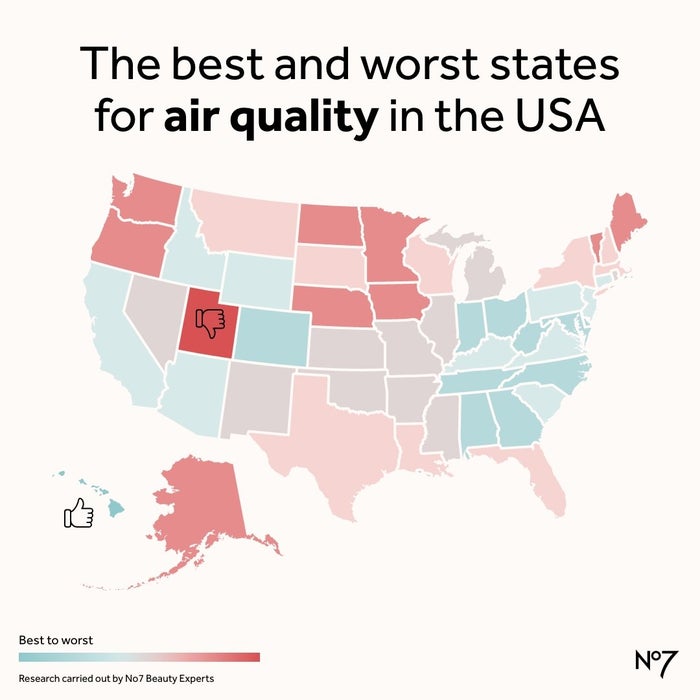
What the experts say
Dr Mike Bell, Head of Science Research, at No7 Beauty said:
“Only small amounts of sun exposure are required for adequate vitamin D production, so really the more annual sun exposure there is, the greater the risk of sun damage and skin cancer risk (if the skin is unprotected without SPF).
“The optimum environmental temperature for skin (and for the human body) is around 64.4°F – 71.6°F. This allows for optimum heat exchange between the body (at 98.6°F) and the outside.
“Dry skin is an issue related more to humidity (and dew point) rather than temperature itself. We monitor the outside temperatures and humidities in clinical trials as changes can account for differences seen in clinical results during studies.
“Looking at temperatures specifically, higher temperatures and higher humidities can be a problem for people with atopic dermatitis or rosacea as the heat and humidity can trigger flare ups.”

